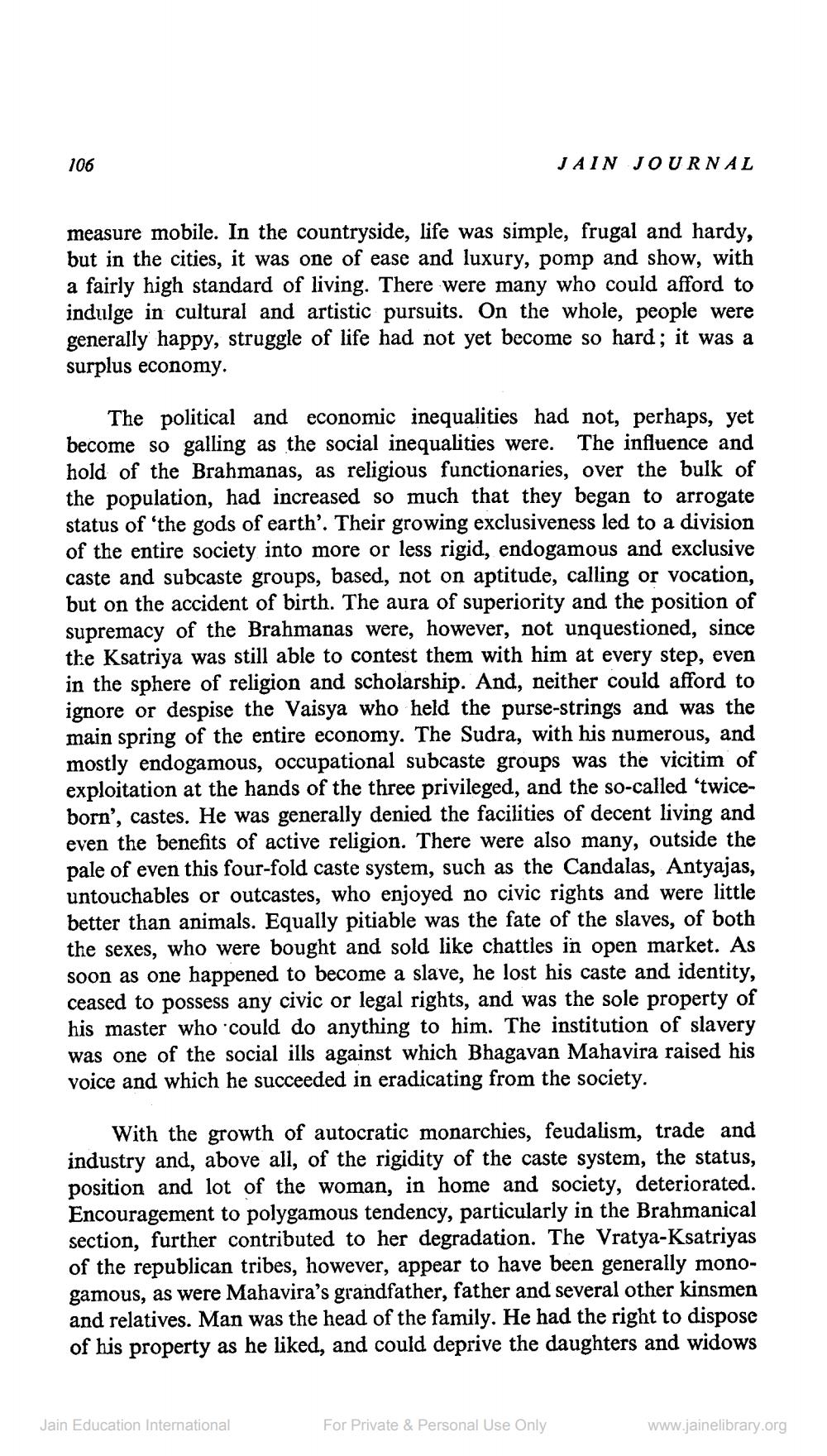________________
106
measure mobile. In the countryside, life was simple, frugal and hardy, but in the cities, it was one of ease and luxury, pomp and show, with a fairly high standard of living. There were many who could afford to indulge in cultural and artistic pursuits. On the whole, people were generally happy, struggle of life had not yet become so hard; it was a surplus economy.
JAIN JOURNAL
The political and economic inequalities had not, perhaps, yet become so galling as the social inequalities were. The influence and hold of the Brahmanas, as religious functionaries, over the bulk of the population, had increased so much that they began to arrogate status of 'the gods of earth'. Their growing exclusiveness led to a division of the entire society into more or less rigid, endogamous and exclusive caste and subcaste groups, based, not on aptitude, calling or vocation, but on the accident of birth. The aura of superiority and the position of supremacy of the Brahmanas were, however, not unquestioned, since the Ksatriya was still able to contest them with him at every step, even in the sphere of religion and scholarship. And, neither could afford to ignore or despise the Vaisya who held the purse-strings and was the main spring of the entire economy. The Sudra, with his numerous, and mostly endogamous, occupational subcaste groups was the vicitim of exploitation at the hands of the three privileged, and the so-called 'twiceborn', castes. He was generally denied the facilities of decent living and even the benefits of active religion. There were also many, outside the pale of even this four-fold caste system, such as the Candalas, Antyajas, untouchables or outcastes, who enjoyed no civic rights and were little better than animals. Equally pitiable was the fate of the slaves, of both the sexes, who were bought and sold like chattles in open market. As soon as one happened to become a slave, he lost his caste and identity, ceased to possess any civic or legal rights, and was the sole property of his master who could do anything to him. The institution of slavery was one of the social ills against which Bhagavan Mahavira raised his voice and which he succeeded in eradicating from the society.
With the growth of autocratic monarchies, feudalism, trade and industry and, above all, of the rigidity of the caste system, the status, position and lot of the woman, in home and society, deteriorated. Encouragement to polygamous tendency, particularly in the Brahmanical section, further contributed to her degradation. The Vratya-Ksatriyas of the republican tribes, however, appear to have been generally monogamous, as were Mahavira's grandfather, father and several other kinsmen and relatives. Man was the head of the family. He had the right to dispose of his property as he liked, and could deprive the daughters and widows
Jain Education International
For Private & Personal Use Only
www.jainelibrary.org




